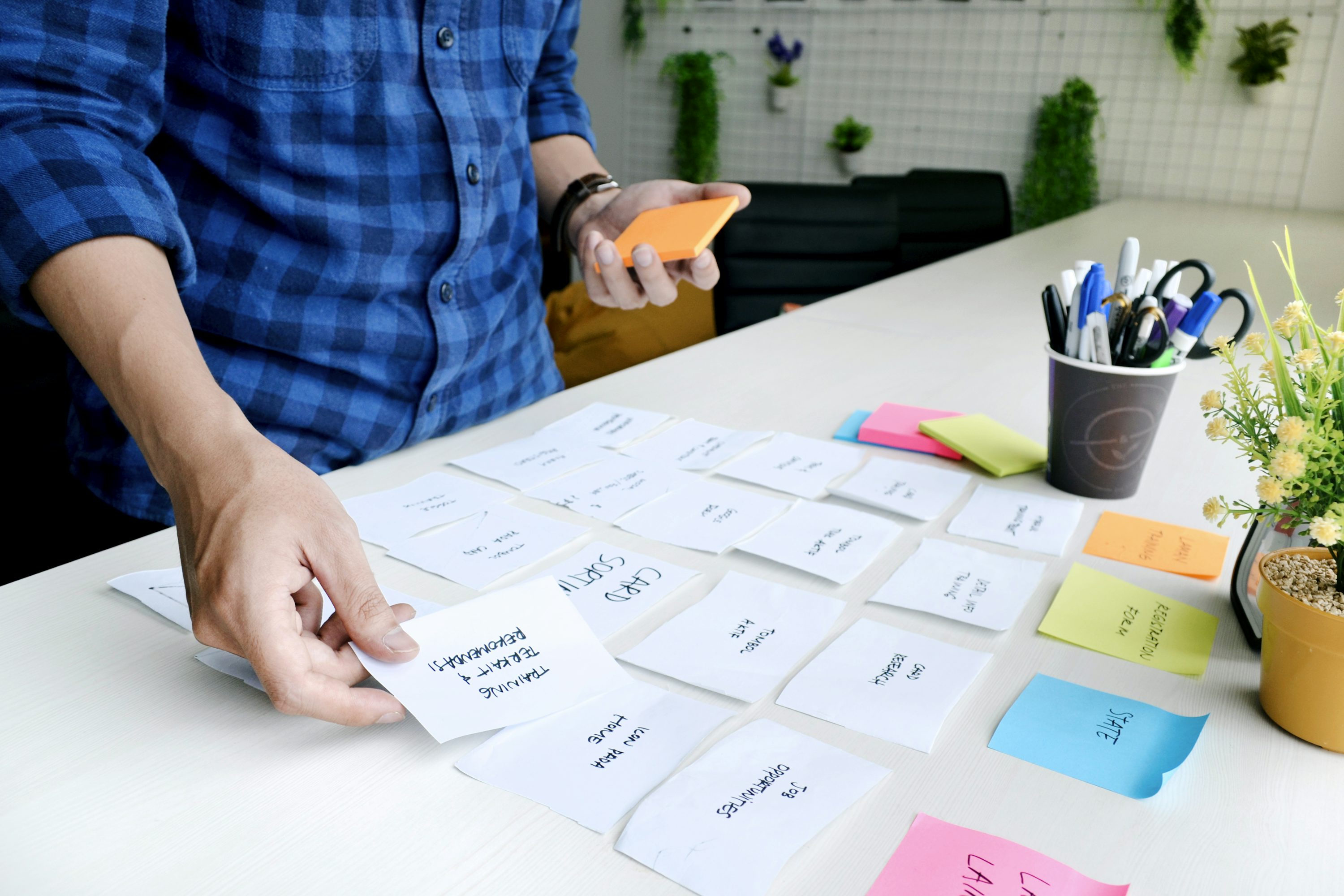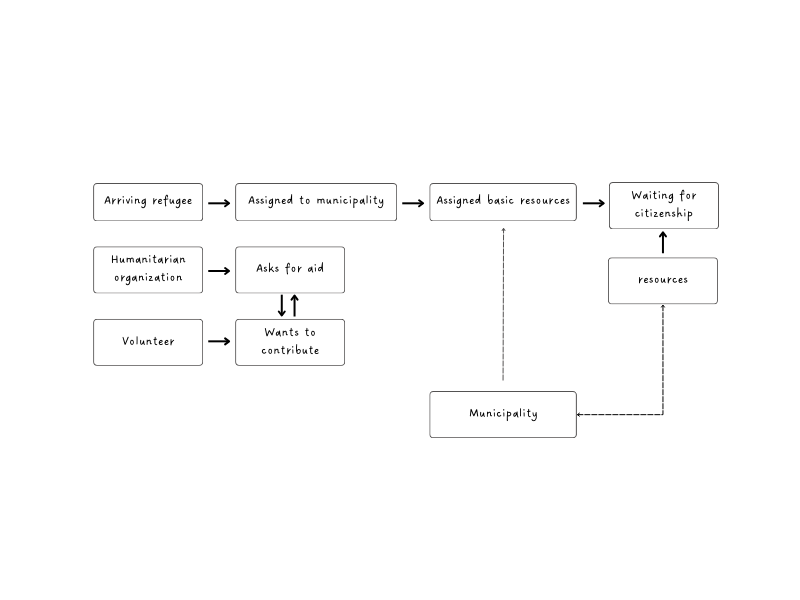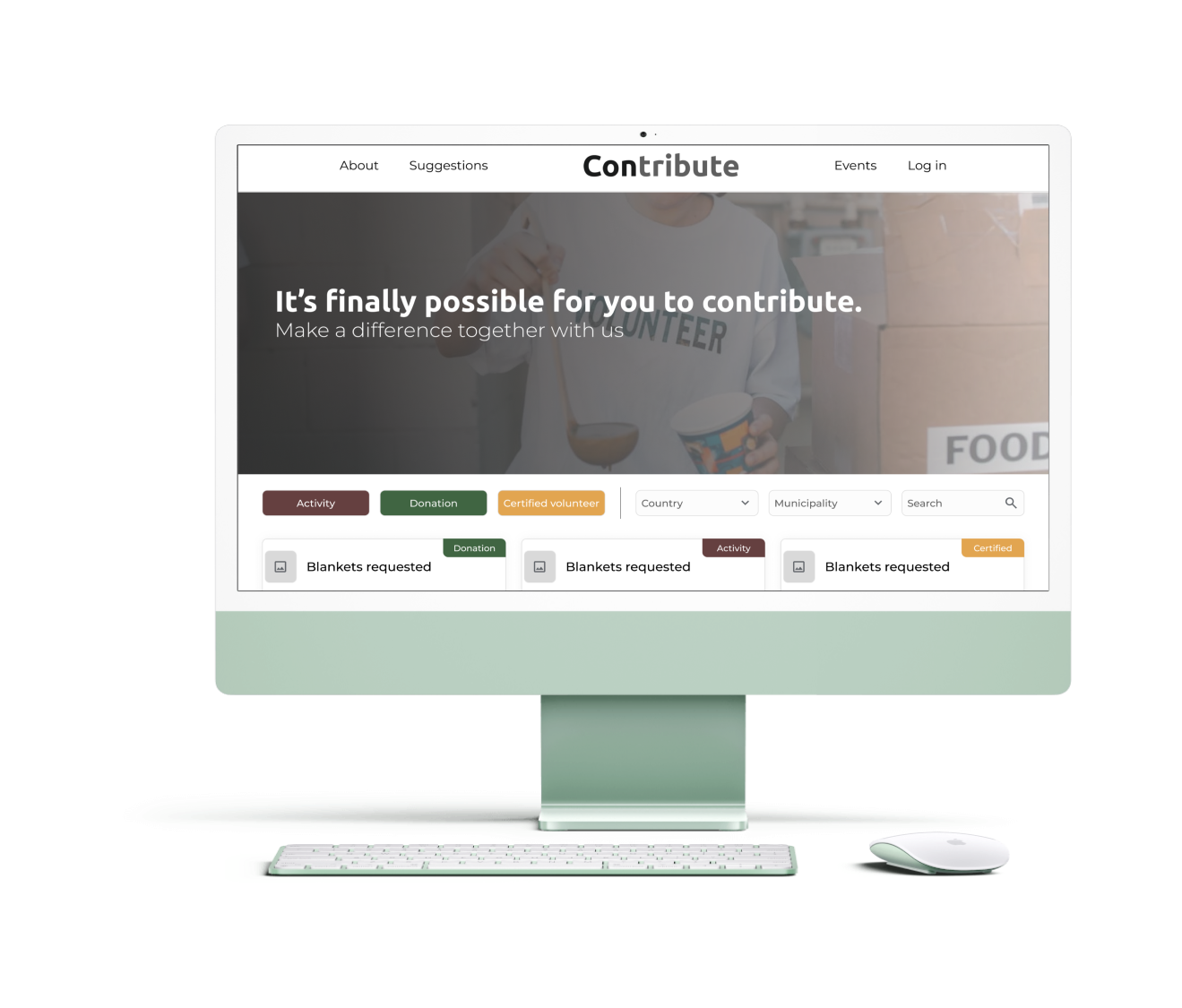Background
The client for this project was HighFive, an independent innovation department of Halmstad municipality in Sweden. Their objective was to establish a platform facilitating mutual aid, connecting individuals seeking to contribute with organizations in need of assistance.The project aimed to develop a scalable solution applicable beyond this immediate context.
| Project group | Company | Project duration |
|---|---|---|
| 4 people | Region Halland | 4 weeks |
Understanding
Research
We focused on exploring how the municipality and help organizations in Halmstad were addressing the crisis in Ukraine, with a specific focus on refugees. Initially, we conducted online research to understand how local help organizations and the municipality worked with refugees. We explored organizations in Halmstad that focused on crisis relief, aiming to identify existing support mechanisms and how citizens could contribute. However, during this initial research phase, we encountered challenges in managing the vast amount of data. To overcome this, we adopted a more structured approach inspired by service design methodologies, specifically ecosystem mapping. We created a swimlane diagram to visualize the various stakeholders involved in helping refugees in Halmstad. This included:
- Help organizations
- The municipality of Halmstad
- Government agencies
- Citizens
- Integration processes for refugees
This mapping process gave us a comprehensive view of the relationships between different stakeholders and highlighted areas where we needed more information.

Interviews
With the ecosystem map in place, we attempted to gather insights by contacting help organizations and the municipality. However, due to the ongoing crisis in Ukraine, direct communication was challenging. To adjust our strategy, we decided to conduct interviews with key stakeholders, including:
- Employees from help organizations
- Municipal staff from Halmstad
- Citizens with experience in volunteering
- Citizens withoth experience in volunteering
I took part in organizing and conducting interviews, focusing on extracting key insights from stakeholders. This was crucial in shaping our approach to designing a platform that could meet the needs of both organizations and citizens. The interviews provided valuable insights into the following:
- Opportunities for Citizens to Help: The primary avenues for citizens to contribute are through volunteering or monetary donations. However, private individuals often find volunteering to be too much of a commitment.
- Barriers to volunteering: Many citizens want to help but are uncertain about how to do so, indicating a need for more flexible and sporadic ways to contribute.
These findings shaped our approach to designing solutions that would make it easier for citizens to get involved in supporting refugees in Halmstad.
Define
After gathering data, we decided to use a service design approach to develop a model of the current state. We began by mapping out the stakeholders in the current process of integrating immigrants into society.

Drawing from discussions with our contact at Halmstad municipality and our research, we created a journey map to guide our approach. This service design method helped us pinpoint the ideal stage for introducing our crowdsourced aid concept.

Defining the concept
Synthesizing research insights, the team envisioned a platform enabling private individuals to make sporadic contributions with ease. Recognizing the barriers to traditional volunteering, the solution aimed to provide accessible pathways for citizen engagement. Based on our empirical findings, we concluded that participants would appreciate the ability to choose their level of commitment before engaging. As a result, we divided aid requests into three categories: donations (of items), participation in activities, and organizing activities (for certified volunteers). The latter was especially important, requiring specific competencies and background checks for roles like organizing activities for refugees. Furthermore, we developed user flows for each type of engagement, ensuring smooth integration.

Evaluation
User testing sessions uncovered usability concerns, particularly regarding visual cues and category labeling within the prototype. In response, a collaborative workshop was organized, resulting in refined iterations that addressed these usability issues.
Building upon the outcomes of the workshop, the team meticulously iterated on the prototype, paying particular attention to enhancing visual cues, category labeling, and overall user experience. This iterative process involved incorporating feedback gathered from user testing sessions conducted during the first iteration, ensuring that the subsequent prototype iterations were more aligned with user expectations and preferences. The second iteration prototype was subjected to another round of usability testing, this time with a heightened emphasis on assessing the effectiveness of the refinements implemented based on the workshop outcomes. User feedback from this iteration provided valuable insights into the efficacy of the design changes and helped validate the improvements made to the prototype.
As the evaluation manager, I played a pivotal role in orchestrating the prototype evaluations. This involved coordinating user testing sessions, gathering feedback, and facilitating the collaborative workshop to address usability issues. I ensured that the iterative design process incorporated user feedback to improve the prototype's usability and overall experience.

Wrap up
Solution
The project resulted in a web-based platform that serves as a vital bridge between citizens and help organizations. Empowering citizens with clear and intuitive pathways for engagement, the platform facilitates seamless communication and collaboration during crises.

Contributions
As the evaluation manager, my role was pivotal in orchestrating prototype evaluations and synthesizing user feedback. Additionally, I contributed to various phases of the project, including research, ideation, service design, and prototyping, ensuring a holistic and user-centric approach throughout the project lifecycle.
Lessons learned
A holistic approach to design: This project showed the benefits of a holistic approach, considering the entire user journey and the needs of all stakeholders. By addressing the broader context and focusing on the user experience from start to finish, the team created a platform that not only solved the immediate problem but also had the potential for scalability and wider application.
Flexibility within the design process: Early in our project, we encountered unexpected challenges during the research phase. The ongoing crisis in Ukraine made direct communication with stakeholders more difficult, requiring us to adjust our approach. Instead of in-person interviews, we pivoted to virtual meetings and email communication to gather the information we needed. This adaptability allowed us to refocus our strategy and find new ways to overcome obstacles. We learned that staying open to change can lead to better outcomes, even when initial plans fall apart. By being flexible, we were able to design a platform that effectively connected citizens with aid organizations, despite the disruptions. Working in this project highlighted the importance of flexibility and adaptability in UX design. I realized that when you encounter unexpected challenges, a positive attitude and a willingness to change direction can lead to successful outcomes. This project reinforced the idea that flexibility isn't just about coping with setbacks—it's about finding creative solutions and achieving the best results.
